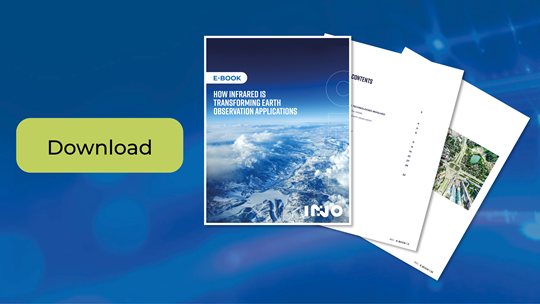How Infrared is Transforming Earth Observation Applications
Infrared (IR) radiation is electromagnetic radiation with a wavelength greater than the visible spectrum. It allows, among other things, the non-contact measurement of the temperature of targeted objects. In infrared mode, anything with a temperature above zero degrees Kelvin emits heat, which is infrared radiation. Warm objects, such as living organisms, emit infrared waves, as do very cold objects, such as pack ice and icebergs.
Today, infrared sensors are more powerful than ever and open the door to a multitude of new applications.
In this 32-page e-book, we present how infrared technology is changing observation activities and the applications it now makes possible.
Technical level
![]()
